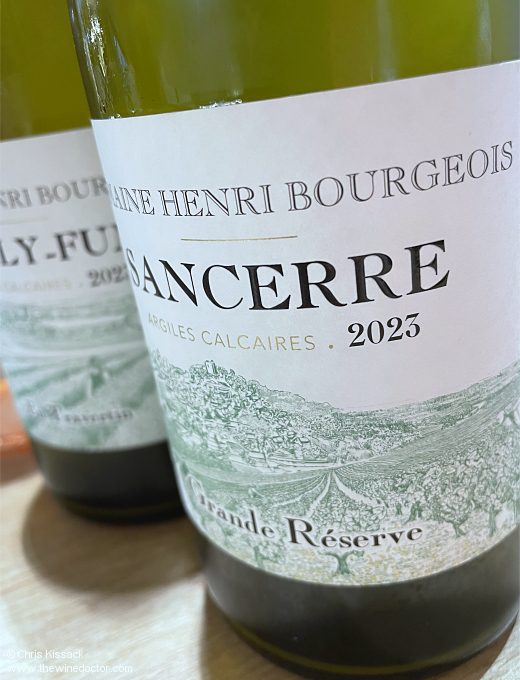Henri Bourgeois: Wines
The picking is partly achieved by hand, certainly for the top-flight cuvées, with picking in several tries if required in order to optimise the ripeness of the harvested fruit. It has to be said that, for the lesser cuvées, large areas are still picked by machine. This is the norm in Sancerre today though. The yields vary, but are broadly between 40 and 50 hl/ha (frosted vintages or otherwise difficult seasons excepted, obviously), and as you might imagine the top cuvées tend to be towards the lower end of this range. The fruit is delivered to the four-level cellars pictured on the first page of this profile, first being sorted over a table de tri, after which the whites are pressed while the reds are destemmed, and the corresponding juice or berries transferred to the relevant fermentation vessels.
From this point the juices are directed towards one of any number of possible cuvées, and I will be the first to admit that despite visiting and tasting here for many years I have found the Henri Bourgeois portfolio nothing short of confusing. The range of wines has inevitably always been broad, and naturally it included a multitude of wines with the Sancerre appellation. Some of these had very similar and yet meaningless names – Le Bourgeoise, La Demoiselle de Bourgeoise and Le MD de Bourgeois, for example – while other generic labels went under a myriad different names, one blend having at least three different names for different markets. In addition, the labels always seemed old-fashioned and did not communicate the excitement that could at times be found within the bottle. So I was overjoyed in 2024 to see the range overhauled and tightened up, with many of the less informative and confusing names being ditched in favour of terroir definitions. At the same time the labels were redesigned, and they now feature beautifully drawn vineyard scenes.
Even after this overhaul there are six streams to the range, but only three are of great importance. Using the names the Bourgeois family give these streams, the three most significant are the Terroir, Legacy and Single Vineyard ranges. I will deal with these first, before concluding with the three less noteworthy streams. I don’t consider the New Zealand wines to be within my remit, by the way, so won’t be discussing the Clos Henri labels here at all.
I start with the Terroir range because these are perhaps the Henri Bourgeois wines you are most likely to encounter by chance.
First up is a range of white, rosé and red wines in the Sancerre appellation which go by the name Grande Réserve. Historical alternative names for this label included Les Baronnes and Les Bonnes Bouches. In the UK I would most commonly encounter it under this latter name, and hence this is the name I largely used in my earlier tasting notes. More recently, tasting with Arnaud Bourgeois, it is the Grande Réserve name I encounter most frequently. This level of wine used to be a large-volume blend of home-grown and négoce fruit, but I think these days it comes exclusively from Henri Bourgeois vineyards, the soils 65% clay and 35% limestone, located on the slopes between Chavignol and Sancerre, all worked using organic methods. Négoce fruit will instead be channelled into the generic Tradition range (more on which near the bottom of the page).

